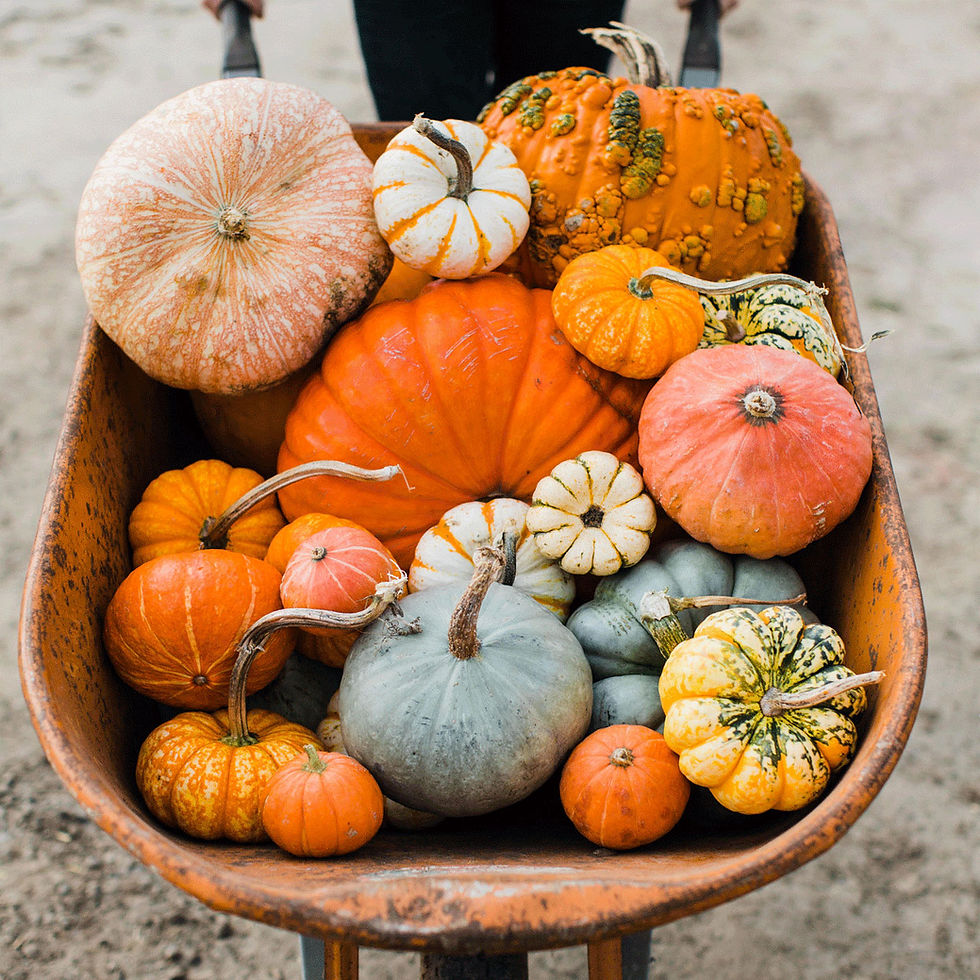Agricultural Ties to Halloween
- Central Rivers Farmshed

- Oct 21, 2022
- 4 min read
Halloween has a rich history rooted in agriculture. Farmers, root vegetables, and even rotten cabbage all have ties back hundreds of years to Celtic and Roman traditions. Once called “Samhain” and then “All Hallows Eve,” October 31st was believed to be the day that the veil between the living and the dead worlds was at its thinnest. With close contact to evil spirits and deceased loved ones, many old traditions have transformed and resemble the fun new Halloween activities of today. Surprisingly, food and agriculture both have strong influences in these areas.

Farming and Halloween:
Celtic beliefs marked Samhain as the day as the end of the harvest season and the beginning of winter, when summer and times of warmth end. It was believed by farmers that as their crops died, spirits would be able to rise into the world of the living.
Bobbing for Apples:
Apple picking, apple cider, baking apple goods, and bobbing for apples are all festive fall activities. September and October mark peak apple season, where you can pick one of the crispiest, crunchiest apples you’ll ever taste. The difference in taste from a local, pesticide free orchard to what you find in the grocery store does not go without notice. But…why do we stick our face in a bucket of water and try grabbing them with our mouth on Halloween? The origin of this activity dates back to when the Roman empire ruled. Their goddess Pomona, the goddess of fruit orchids, was celebrated by Romans around November 1st. It was believed that whoever grabbed an apple first would be the first to marry in the new year. They also believed that apples could tell you your love fortune. Peeling the apple in one, continuous peel and then tossing it over your shoulder was supposed to be shaped in the initials of your lover's name. Apples bring so much joy in many forms, figuratively and literally.
Carving Pumpkins:
Carving pumpkins is a modern twist to a dark activity. People carved into vegetables, just not pumpkins. Instead, it was an effort to ward away evil spirits and welcome their deceased loved ones. Celtics would usually take a large turnip, sometimes a beet or potato, and carve a demon's face into it and light it up with a candle or coal to glow. The scary face and glow would protect the house. Why did it change? Not just because they were genuinely terrifying (pictured below) but Irish immigrants discovered pumpkins were much easier to carve in the 1800s.

Trick or Treat:
Trick or treat is guessed to originate in a few different ways. One of the reasons was to ward off prankster spirits from the home. People would set food outside their doors to stay on good terms with the more devious spirits. In exchange, the spirits wouldn’t pull any ‘tricks.’ Hence, the name.
A more pleasurable allusion to trick or treating is when people used food on Halloween to welcome home their deceased loved ones back home while the veil was thin. They set an extra spot on the dinner table so they can stay with them. Food, now and then, acts as a way for us to connect with our loved ones and communities.
The last past event that we can correlate with trick or treating dates to the Middle Ages. Soul Cakes, a shortbread cookie, was handed out to poor community members by the wealthy in exchange for prayers of their deceased loved ones.
Cabbage Day/ Mischief Night:
The last agriculture and food related tradition is not one we should celebrate…Cabbage Day. While we always prefer the creative cooking, preservation, or composting of cabbages, Scottish women had other plans. Young women would pull up their neighbors cabbages the day before Halloween, perform witchcraft, and hopefully catch a glimpse of their future husband. Then, they would set off the pranks and tricks for the night by throwing the cabbages at their neighbors doors. Today, cabbages aren’t necessarily used, instead rebels use eggs, toilet paper, or shaving cream to cause mayhem.
Although the harvest season is drawing to a close, there are many wonderful fall produce to enjoy and store for future use. In Central Wisconsin, you can still find:
Apples, basil, beets, bok choy, broccoli, Brussels sprouts, cabbage, carrots, celery, celeriac, cilantro, sweet corn, eggplant, garlic, gourds, kale, kohlrabi, onions, peppers, potatoes, pumpkins, radishes, spinach, and winter squash.
Just because the summer is over, doesn’t mean there isn't nutritious and delicious locally grown food available. To celebrate autumn, Halloween, or the changing of seasons, we encourage you to visit your local market and experiment with all the fall produce available as we move into winter. If you need ideas, we have a seasonal recipe page on our website to help guide you to eating locally and seasonally.

As the temperatures chill and spooky season comes around the corner, remember and give thanks to your farmers for keeping us fed from summer all the way to the end of the harvest season. Give an ode of thanks and dress up as a farmer or your favorite produce this Halloween!
Keep learning,
Maddie

Comments